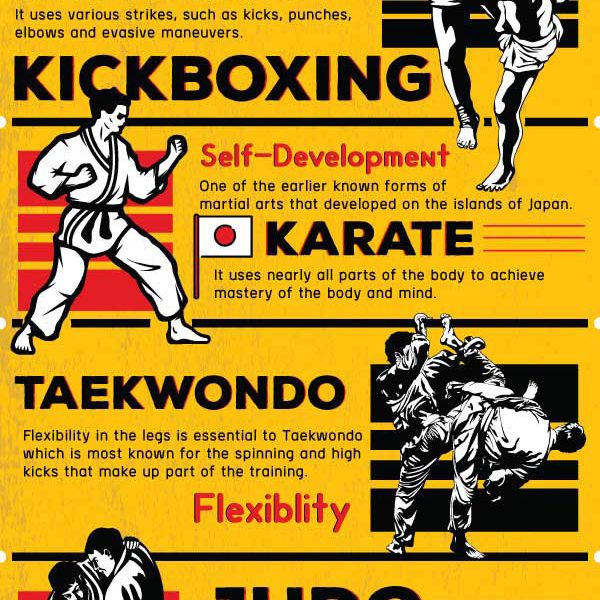Introducing The Selection Of Martial Arts Disciplines: An Overview From Martial Arts To Taekwondo
Introducing The Selection Of Martial Arts Disciplines: An Overview From Martial Arts To Taekwondo
Blog Article
Article Author-Aldridge Russo
Are you tired of sensation bewildered by the vast world of fighting styles? With so many styles to pick from, it can be very easy to get lost in a sea of strikes, kicks, and strange names. Yet anxiety not!
This conversation will certainly debunk the different fighting styles designs, taking you on a journey from the powerful strikes of Martial arts to the dynamic kicks of Taekwondo. Prepare yourself to uncover the beginnings, techniques, and viewpoints behind these ancient art forms.
So, tighten your belt and prepare to embark on an enlightening exploration right into the fascinating world of fighting styles.
Origins of Martial Arts Styles
The origins of martial arts designs can be mapped back to old human beings and their requirement for protection and combat techniques. Throughout history, various cultures developed their own special approaches of battling, each with its very own collection of techniques and ideologies.
In China, for example, martial arts styles such as Martial art and Tai Chi were created as a means of protection and boosting physical and mental well-being.
In Japan, the samurai warriors created designs like Karate and Judo, focusing on discipline, accuracy, and proficiency of the body.
In a similar way, in Korea, Taekwondo emerged as a fighting style highlighting high kicks, fast movements, and psychological perseverance.
These early human beings laid the foundation for the diverse array of martial arts styles that exist today, each with its very own rich history and social relevance.
Strategies and Training Methods
To grasp fighting styles styles, specialists need to learn various methods and training techniques.
Strategies are the specific motions and actions made use of in battle, such as punches, kicks, tosses, and blocks. Different fighting styles styles have their own distinct collection of strategies that professionals should master with strenuous training.
Training techniques vary depending on the design, yet they usually involve a mix of physical fitness, drills, competing, and types.
Physical conditioning is vital to build toughness, versatility, and endurance. Drills aid professionals improve their methods and enhance their rate and accuracy.
Sparring allows professionals to practice their strategies in a regulated, sensible atmosphere. Forms, additionally called kata, are prearranged series of motions that help practitioners establish muscular tissue memory and emphasis.
Philosophies and Principles
Checking out the approaches and principles of martial arts styles can provide you with a deeper understanding of your chosen self-control. Each fighting style has its very own one-of-a-kind viewpoint and collection of assisting concepts that form the means it's practiced.
As an example, Martial arts stresses discipline, respect, and self-control. It instructs professionals to focus their body and minds, allowing them to protect themselves while keeping a feeling of inner tranquility.
On the other hand, Taekwondo places a solid focus on rate, agility, and flexibility. Its concepts are rooted in the tenets of courtesy, integrity, willpower, self-control, and indomitable spirit.
Verdict
Since you've discovered the beginnings, techniques, and ideologies of numerous fighting styles designs, you have a much deeper understanding of these old techniques.
Imagine martial arts classes , experimenting undeviating determination and emphasis, appearing boards with an effective punch.
Their trip showcases the devotion and toughness required to grasp a fighting style, reminding us that with discipline and determination, anything is possible.
